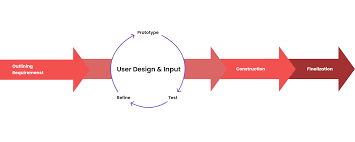Unlocking Growth with Odoo Website Development Solutions
The Power of Odoo Website Development
Odoo is a comprehensive suite of business applications that includes a powerful website builder. With Odoo’s website development capabilities, businesses can create stunning and functional websites that enhance their online presence and drive growth.
Key Features of Odoo Website Development:
- Drag-and-Drop Website Builder: Odoo’s intuitive drag-and-drop interface allows users to easily design and customize their websites without the need for coding skills.
- Responsive Design: Websites built with Odoo are responsive and optimized for viewing on various devices, ensuring a seamless user experience across desktops, tablets, and smartphones.
- E-commerce Integration: Odoo seamlessly integrates with its e-commerce module, allowing businesses to create online stores with advanced features such as product catalogs, shopping carts, payment gateways, and more.
- SEO-Friendly: Odoo websites are designed with SEO best practices in mind, helping businesses improve their search engine rankings and attract more organic traffic.
- Multilingual Support: With Odoo’s multilingual capabilities, businesses can create websites in multiple languages to reach a global audience and expand their market reach.
- Analytics and Reporting: Odoo provides built-in analytics tools that allow businesses to track website performance, visitor behavior, conversion rates, and other key metrics to make data-driven decisions for optimization.
The Benefits of Using Odoo for Website Development
By leveraging Odoo’s website development features, businesses can enjoy the following benefits:
- Cost-Effective Solution: Odoo offers a cost-effective website development solution compared to custom development or other proprietary platforms.
- Rapid Deployment: With its user-friendly interface and pre-built templates, businesses can quickly launch professional-looking websites without extensive development time.
- All-in-One Platform: Odoo’s integrated suite of applications allows seamless data flow between different modules such as sales, CRM, inventory management, and more for a streamlined business operation.
- Ongoing Support and Updates: The Odoo community provides continuous support, updates, and new features to ensure that businesses always have access to the latest technologies and improvements.
In conclusion, Odoo website development empowers businesses to create dynamic and engaging websites that align with their brand identity and goals. With its user-friendly interface, advanced features, and scalability, Odoo is an excellent choice for businesses looking to establish a strong online presence and drive digital success.
Top 5 Tips for Effective Odoo Website Development
- Utilize Odoo’s built-in website builder for easy and customizable website development.
- Take advantage of Odoo’s extensive library of website themes and modules to enhance the functionality of your site.
- Ensure your Odoo website is mobile-responsive for optimal viewing on different devices.
- Regularly update and maintain your Odoo website to ensure security and performance.
- Integrate SEO best practices into your Odoo website development to improve visibility on search engines.
Utilize Odoo’s built-in website builder for easy and customizable website development.
By utilizing Odoo’s built-in website builder, businesses can streamline the process of website development with ease and flexibility. The intuitive drag-and-drop interface empowers users to create custom websites without the need for advanced coding skills. This feature not only saves time but also allows for quick customization to align with the brand’s unique identity and requirements. With Odoo’s website builder, businesses can create visually appealing and functional websites that enhance their online presence effectively.
Take advantage of Odoo’s extensive library of website themes and modules to enhance the functionality of your site.
To maximize the potential of your Odoo website development, make sure to leverage Odoo’s vast collection of website themes and modules. By utilizing these resources, you can enhance the functionality and visual appeal of your site, creating a more engaging and user-friendly experience for visitors. Whether you need a specific feature or design element, Odoo’s library offers a wide range of options to customize your website according to your unique requirements. Embracing these themes and modules can significantly elevate the overall performance and aesthetics of your Odoo-powered site.
Ensure your Odoo website is mobile-responsive for optimal viewing on different devices.
It is crucial to ensure that your Odoo website is mobile-responsive to provide an optimal viewing experience across various devices. By making your website mobile-friendly, you can cater to a wider audience and improve user engagement. With the increasing use of smartphones and tablets for browsing the internet, having a responsive design will enhance usability and accessibility, ultimately leading to higher customer satisfaction and better conversion rates. Prioritizing mobile responsiveness in your Odoo website development strategy is key to staying competitive in today’s digital landscape.
Regularly update and maintain your Odoo website to ensure security and performance.
Regularly updating and maintaining your Odoo website is crucial to ensuring optimal security and performance. By staying up-to-date with the latest software updates and security patches, you can protect your website from vulnerabilities and potential cyber threats. Additionally, ongoing maintenance helps to optimize the functionality of your website, ensuring a seamless user experience for visitors. By prioritizing regular updates and maintenance tasks, you can safeguard your Odoo website’s integrity and reliability in the long run.
Integrate SEO best practices into your Odoo website development to improve visibility on search engines.
Integrating SEO best practices into your Odoo website development is crucial for enhancing your online visibility and ranking higher on search engines. By optimizing your website with relevant keywords, meta tags, quality content, and proper site structure, you can attract more organic traffic and improve your chances of being discovered by potential customers. Implementing SEO strategies in your Odoo website development not only boosts your search engine rankings but also enhances the overall user experience, leading to increased engagement and conversions.




